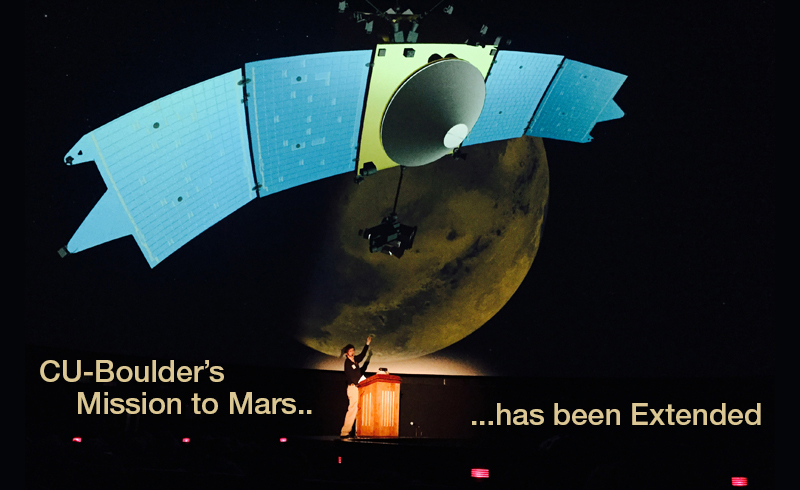This content has been archived. It may no longer be relevant

MAVEN update from Chief Investigator Bruce Jakosky:
The MAVEN team announced its first major scientific results on Nov. 5 at a press conference at NASA Headquarters that was televised live on NASA TV. At the same time, we published five papers in the prestigious scientific journal Science, and 44 in the journal Geophysical Research Letters.
Our results focused on the structure of the upper atmosphere, its interactions with the Sun and the solar wind and the escape of atmospheric gases into space – literally the stripping of the Martian atmosphere by the solar wind. The escape rate is relatively low today, approximately 100 grams per second, or about 0.25 pounds per second. Our conclusion is that stripping of the
MAVEN completed its one-Earth-year primary science mission on Nov. 15. NASA has approved us for an extended mission, allowing for the continued collection and analysis of data. During the extended mission, we’ll observe the behavior of the solar wind during other seasons on Mars and measure its affect on the upper atmosphere. Solar activity follows an 11-year cycle and we are in that part of the cycle during which it gradually declines, affording us the opportunity to measure and study atmospheric erosion under decreasing solar stress.
The MAVEN science team is working incredibly hard on data analysis, and has been very productive so far. Our initial results are really exciting, and we are looking forward to the continuing mission!
Sincerely,
Bruce M. Jakosky

